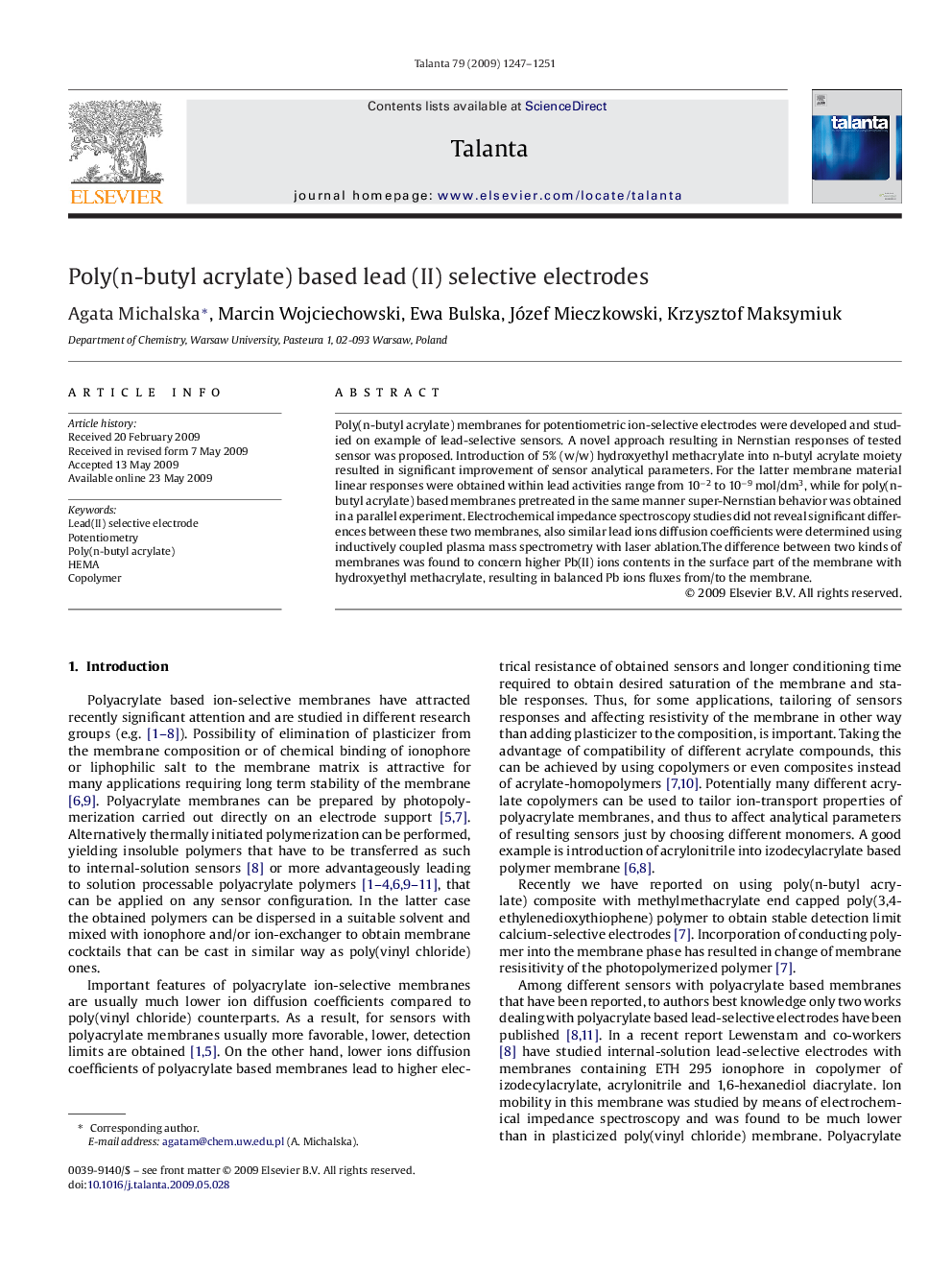| Article ID | Journal | Published Year | Pages | File Type |
|---|---|---|---|---|
| 1246817 | Talanta | 2009 | 5 Pages |
Abstract
Poly(n-butyl acrylate) membranes for potentiometric ion-selective electrodes were developed and studied on example of lead-selective sensors. A novel approach resulting in Nernstian responses of tested sensor was proposed. Introduction of 5% (w/w) hydroxyethyl methacrylate into n-butyl acrylate moiety resulted in significant improvement of sensor analytical parameters. For the latter membrane material linear responses were obtained within lead activities range from 10â2 to 10â9Â mol/dm3, while for poly(n-butyl acrylate) based membranes pretreated in the same manner super-Nernstian behavior was obtained in a parallel experiment. Electrochemical impedance spectroscopy studies did not reveal significant differences between these two membranes, also similar lead ions diffusion coefficients were determined using inductively coupled plasma mass spectrometry with laser ablation.The difference between two kinds of membranes was found to concern higher Pb(II) ions contents in the surface part of the membrane with hydroxyethyl methacrylate, resulting in balanced Pb ions fluxes from/to the membrane.
Related Topics
Physical Sciences and Engineering
Chemistry
Analytical Chemistry
Authors
Agata Michalska, Marcin Wojciechowski, Ewa Bulska, Józef Mieczkowski, Krzysztof Maksymiuk,
